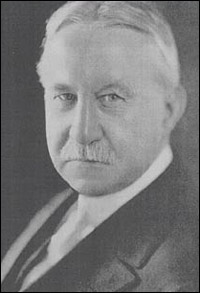
*
Ask Playbill.com answers your (and sometimes our own) theatre-related questions. To ask a question, email [email protected]. Please specify how you would like your name displayed and please include the city in which you live.
Question: Why is the midtown theatre district called "Broadway" when there are only two actual theatres on Broadway?
It's true. There are only two physical theaters that face onto the vital and historic Manhattan artery called Broadway: The Winter Garden Theatre and (natch) The Broadway Theatre. So why did we come to refer to the Times Square theatre district as "Broadway," when there are so many more theatres on the side streets that radiate off that avenue?
Well, I could answer that "W. 44th Street!" doesn't have much a marketing ring to it. But the truth is that there used to be a great many theaters on Broadway itself. According to Nicholas Van Hoogstraten's book "Lost Broadway Theatres," there were once a good dozen, beginning at 38th Street (Abbey's Theatre) and going all the way up to 54th (Hammerstein's). Among them were the famous Empire Theatre, at 40th, one of the most well-regarded houses in Broadway history; and the huge Olympia, between 44th and 45th. Taken together, the theatre created a river of white light when their marquees were lit at night, leading to the early nickname "The Great White Way." As the theatres closed, the name "Broadway" stuck as a general term for theatre in that district.
 |
||
| Edward Franklin Albee II |
Indeed it did! The mall, on DeKalb Street off Fulton, was named for, and was built on the site of, the former Albee Square Theatre. That movie palace was named after Edward Franklin Albee II (1857-1930), a vaudeville magnate, and the father of Reed Albee, who adopted little Edward Albee when he was a boy. Albee Sr. had many theaters named after him during his lifetime, including at least one other in Brooklyn alone. The DeKalb Street theatre was demolished in 1977, but the Albee name retained. The mall, meanwhile, was destroyed in 2008. It's now an empty lot. Whether what rises from that dust will retain the Albee name is open to question.
Question: How did Circle in the Square get its name?
If you guessed that Broadway's most peculiarly named theatre's moniker has something to do with the fact that the auditorium inside is "in the round" — meaning there are seats on all four sides of the stage— then you're half right. That, indeed, is what the "Circle" in "Circle in the Square" refers to. But the "Square" has nothing to do with Times Square, as one might assume. The company moved to its Broadway home on West 50th Street only in 1970. By then, it had 20 years of Off-Broadway experience under its belt; it was, in fact, one of the founders of the Off-Broadway movement.
Circle in the Square had a couple homes Off-Broadway, both in Greenwich Village. The first was on tiny Sheridan Square (which is actually in the shape of a triangle). That theatre was in the round. Thus: Circle in the Square.









